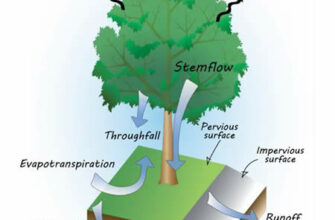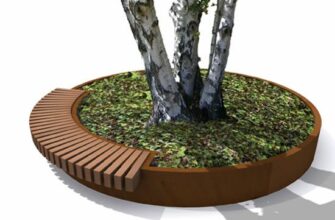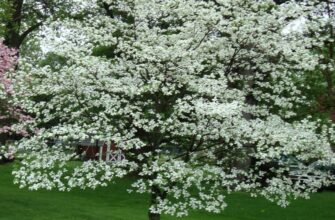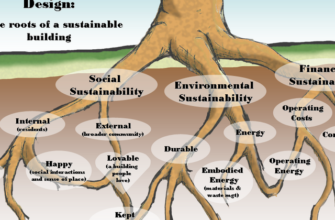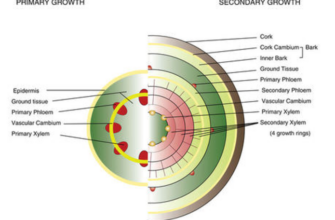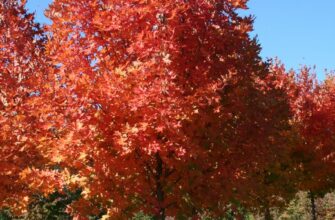- Planting the Right Tree in the Right Place
- Assessing Your Landscape
- Determining Your Climate Zone
- Understanding Soil Conditions
- Considering Sunlight Exposure
- Identifying Your Objectives
- Researching Tree Species
- Selecting a Tree Size
- Evaluating Growth Rate
- Analyzing Maintenance Requirements
- Assessing Disease and Pest Resistance
- Checking for Allergenic Properties
- Considering Wildlife Benefits
- Factoring in Aesthetic Appeal
- Evaluating Tree Lifespan
- Understanding Root System
- Considering Tree Placement
- Consulting with an Arborist
- FAQ:
- What are some factors to consider when choosing a tree to plant?
- How do I determine the size and shape of the tree I want to plant?
- What should I consider about the soil and sunlight requirements of a tree?
- Why is it important to consider the climate and weather conditions when choosing a tree?
Planting the Right Tree in the Right Place
When it comes to planting trees, the environment and location play a crucial role in determining the success and sustainability of the tree. Choosing the right tree for the right place is essential to ensure its long-term health and growth.
Before planting a tree, it is important to consider the environmental conditions of the location. Factors such as sunlight, soil type, and moisture levels can greatly impact the tree’s ability to thrive. Some trees require full sun, while others prefer partial shade. Similarly, certain trees thrive in well-drained soil, while others can tolerate clay or sandy soil. By understanding the specific environmental needs of different tree species, you can select the one that is best suited for your location.
The location of the tree also plays a significant role in its long-term health and growth. Trees should be planted away from buildings, power lines, and other structures to avoid potential damage as they mature. Additionally, considering the space available for the tree to grow is crucial. Planting a tree that will outgrow its surroundings can lead to future problems and the need for costly maintenance.
Choosing the right tree for the right place is not only important for the individual tree, but also for the overall sustainability of the environment. Trees provide numerous benefits, including shade, improved air quality, and habitat for wildlife. By planting trees in appropriate locations, we can maximize these benefits and contribute to a healthier and more sustainable environment.
Assessing Your Landscape
When choosing the perfect tree for your landscape, it is important to assess the environment in which you will be planting. This involves considering factors such as the amount of sunlight, soil type, and available space. By assessing your landscape, you can ensure that you are choosing the right tree for the right place, promoting its long-term health and sustainability.
One key aspect to consider is the amount of sunlight your landscape receives. Some tree species thrive in full sun, while others prefer partial shade. By understanding the light conditions in your landscape, you can select a tree species that will thrive in its specific environment.
Soil type is another important factor to consider when assessing your landscape. Different tree species have varying soil requirements, such as well-drained soil or acidic soil. By testing your soil and understanding its composition, you can choose a tree species that will grow well in your specific soil conditions.
Available space is also a crucial consideration when assessing your landscape. Some tree species require more space to grow and spread their branches, while others can thrive in smaller areas. By evaluating the available space, you can choose a tree species that will fit well within your landscape without causing overcrowding or obstruction.
Overall, assessing your landscape is a vital step in the process of choosing and planting the perfect tree. By considering factors such as sunlight, soil type, and available space, you can ensure that you are selecting a tree species that will thrive in its specific environment and contribute to the overall sustainability of your landscape.
Determining Your Climate Zone
When choosing the right tree for your planting location, it is important to consider the climate zone in which you live. Different tree species thrive in different climates, so understanding your climate zone can help ensure the sustainability of your tree and its ability to thrive in its new environment.
Climate zones are determined by a variety of factors, including temperature, precipitation, and elevation. These factors can greatly influence the types of trees that can be successfully planted in a particular location. For example, a tree species that requires a cool, moist climate may not survive in a hot, arid environment.
There are several resources available to help you determine your climate zone, such as the USDA Plant Hardiness Zone Map. This map divides the United States into different zones based on the average annual minimum temperature. By identifying your zone on the map, you can narrow down the tree species that are most likely to thrive in your area.
Once you have determined your climate zone, you can then research tree species that are well-suited to your specific environment. Consider factors such as sun exposure, soil type, and water availability when selecting a tree for your planting location. By choosing a tree species that is well-adapted to your climate and planting location, you can increase the chances of long-term success and ensure the sustainability of your tree.
Understanding Soil Conditions
When choosing the right tree for your environment, it’s important to consider the soil conditions of the planting site. Different tree species have different soil preferences, and understanding these preferences is crucial for the long-term sustainability of the tree.
Soil conditions can vary greatly from one location to another, and even within the same area. Factors such as soil pH, texture, drainage, and fertility can all impact the success of a tree. For example, some tree species thrive in well-drained, sandy soils, while others prefer clay soils with good moisture retention.
Before planting a tree, it’s recommended to conduct a soil test to determine its composition and nutrient levels. This will help you identify any deficiencies or imbalances that may affect the tree’s growth. Additionally, it’s important to consider the soil’s ability to support the tree’s root system. Some tree species have deep root systems that require well-drained soils, while others have shallow root systems that can tolerate heavier soils.
Once you have a better understanding of the soil conditions, you can choose a tree species that is well-suited to the planting site. This will not only increase the chances of the tree’s survival, but also promote its long-term health and vitality. By selecting the right tree for the right place, you can contribute to the overall sustainability of your environment and create a beautiful landscape for years to come.
Considering Sunlight Exposure
When choosing the perfect tree for planting in a specific location, it is important to consider the sunlight exposure in that place. The amount of sunlight a tree receives is crucial for its growth and development.
Every tree species has different sunlight requirements, and it is essential to select a tree that is suitable for the environment in terms of sunlight. Some trees thrive in full sun, while others prefer partial or full shade.
Before planting a tree, it is important to assess the location and determine how much sunlight it receives throughout the day. This can be done by observing the area at different times and noting the intensity and duration of sunlight.
Once you have determined the sunlight exposure in the planting location, you can choose a tree species that will thrive in that specific environment. This will ensure the tree’s sustainability and long-term health.
Remember, planting the right tree in the right place is crucial for the overall success of your landscaping project. By considering sunlight exposure, you can select a tree that will thrive in its location and contribute to the beauty and sustainability of your outdoor space.
Identifying Your Objectives
When it comes to choosing the perfect tree for your location, it is important to identify your objectives beforehand. Consider the environment in which the tree will be planted and the specific needs and characteristics of the tree species you are considering. By planting the right tree in the right place, you can ensure its long-term health and sustainability.
Firstly, evaluate the location where you plan to plant the tree. Take into account factors such as sunlight exposure, soil type, and drainage. Different tree species have different requirements for these environmental conditions, so it is crucial to choose a tree that will thrive in your particular location.
Next, consider your specific objectives for planting the tree. Are you looking for shade, privacy, or aesthetic appeal? Do you want a tree that will attract wildlife or provide fruit? Understanding your desired outcomes will help you narrow down the tree species that are best suited to meet your objectives.
Additionally, think about the long-term sustainability of the tree. Will it be able to withstand the climate and weather conditions in your area? Is it a native species that will support the local ecosystem? Choosing a tree that is well-adapted to your region will increase its chances of survival and ensure its positive impact on the environment.
By carefully considering your objectives, the environment, and the specific characteristics of different tree species, you can make an informed decision when choosing the perfect tree to plant in the right place. This will not only benefit the tree itself, but also contribute to the overall beauty and sustainability of your surroundings.
Researching Tree Species
Choosing the right tree species for your environment is crucial for successful planting and long-term sustainability. Before deciding on a tree, it is important to research the specific requirements and characteristics of different species to ensure they are suitable for your desired location.
One key factor to consider when researching tree species is the climate of your area. Some trees thrive in hot and dry climates, while others prefer cooler and more humid environments. Understanding the climate of your location will help you select a tree species that can withstand the temperature and moisture conditions of your area.
Another important aspect to consider is the soil type and pH level of your planting location. Different tree species have different soil preferences, and planting a tree in the wrong type of soil can hinder its growth and overall health. Researching the soil requirements of different tree species will help you choose a tree that will thrive in your specific soil conditions.
Additionally, it is important to research the size and growth rate of different tree species. Some trees grow tall and wide, while others have a more compact growth habit. Understanding the size and growth characteristics of a tree species will help you determine if it is suitable for your planting location in terms of space availability and potential impact on nearby structures or other plants.
Researching tree species also involves considering their specific maintenance needs. Some trees require regular pruning or special care, while others are low-maintenance and can thrive with minimal intervention. By researching the maintenance requirements of different tree species, you can select a tree that fits your desired level of involvement and commitment to tree care.
In conclusion, researching tree species is a crucial step in choosing the right tree for your planting location. By considering factors such as climate, soil type, size, growth rate, and maintenance needs, you can select a tree species that is well-suited to your environment and will contribute to the overall sustainability of your landscape.
Selecting a Tree Size
Choosing the right size tree for your environment is an important factor in ensuring its long-term sustainability. When selecting a tree species to plant, it’s crucial to consider the size of the tree at maturity and how it will fit into the available planting space.
Each tree species has its own unique growth characteristics, including height, spread, and overall shape. Understanding these characteristics will help you determine the appropriate size tree to plant in your desired location.
Before planting a tree, carefully assess the available space and consider the tree’s size at maturity. A tree that is too large for its planting location can cause issues such as overcrowding, shading of other plants or structures, or even damage to nearby infrastructure. On the other hand, a tree that is too small may not provide the desired aesthetic or functional benefits that you are looking for.
By selecting a tree size that is suitable for your specific planting location, you can ensure that the tree will thrive and contribute positively to the overall environment. Make sure to research different tree species and their growth habits, and consult with a professional if needed, to make an informed decision about the right tree size for your planting place.
Evaluating Growth Rate
When choosing the right tree for a particular location, it is important to evaluate the growth rate of different tree species. The growth rate of a tree can have a significant impact on its suitability for planting in a specific environment.
Fast-growing tree species can provide quick shade and create a lush green landscape in a short period of time. However, these trees may require more maintenance and pruning to keep them in check. They can also have weaker wood and may be more susceptible to diseases and pests.
On the other hand, slow-growing tree species tend to have stronger wood and are generally more sturdy and long-lasting. These trees require less maintenance and pruning, making them a good choice for areas where sustainability and low maintenance are important factors.
When evaluating the growth rate of different tree species, it is also important to consider the environmental conditions of the planting location. Some tree species may thrive in sunny, dry conditions, while others may prefer shade and moist soil. By choosing a tree species that is well-suited to the specific environmental conditions of the planting location, you can ensure its long-term health and success.
In summary, evaluating the growth rate of different tree species is an essential step in choosing the right tree for a specific location. By considering factors such as maintenance requirements, sustainability, and environmental conditions, you can make an informed decision and plant a tree that will thrive in its surroundings.
Analyzing Maintenance Requirements
When choosing the right tree species for a specific location, it is important to consider its maintenance requirements. Different trees have different needs, and understanding these requirements is crucial for ensuring the long-term health and sustainability of the planted trees.
One of the key factors to consider when analyzing maintenance requirements is the size of the tree. Larger trees generally require more maintenance compared to smaller ones. This includes regular pruning to maintain their shape and size, as well as the removal of dead or diseased branches. Additionally, larger trees may require more frequent watering and fertilization to ensure their proper growth and development.
The location of the tree also plays a significant role in determining its maintenance needs. Trees planted in urban areas, for example, may require more attention due to the higher levels of pollution and stress they may experience. These trees may need additional watering, mulching, and pest management to thrive in their environment.
Another important aspect to consider is the specific planting site. Factors such as soil type, drainage, and exposure to sunlight can greatly impact the maintenance requirements of a tree. For example, trees planted in clay soil may require more frequent watering and fertilization to compensate for the poor drainage. Similarly, trees planted in areas with high exposure to sunlight may need additional protection and care to prevent sunburn and dehydration.
By carefully analyzing the maintenance requirements of different tree species in relation to their location and planting site, it is possible to choose the right tree for the right place. This ensures that the tree will not only survive but also thrive in its environment, contributing to the overall beauty and sustainability of the landscape.
Assessing Disease and Pest Resistance
When choosing a tree for planting, it is important to assess its disease and pest resistance. Different tree species have varying levels of resistance to different diseases and pests, so it is crucial to consider the specific environment and location where the tree will be planted.
By selecting a tree species that is known for its disease and pest resistance, you can help ensure the long-term sustainability of your tree. Trees that are susceptible to diseases and pests may require more maintenance and treatment, which can be costly and time-consuming.
One way to assess disease and pest resistance is to research the specific tree species you are considering. Look for information on common diseases and pests that affect that species and how resistant it is to them. This can help you make an informed decision about whether the tree is suitable for your environment.
Another factor to consider is the overall health of the tree. A healthy tree is more likely to be resistant to diseases and pests. Look for signs of good health, such as strong and sturdy branches, vibrant foliage, and a well-developed root system.
Additionally, consulting with a local arborist or tree expert can provide valuable insight into disease and pest resistance. They can offer guidance on which tree species are best suited for your specific location and provide recommendations based on their knowledge and experience.
Checking for Allergenic Properties
When planting a tree, it is important to consider its allergenic properties to ensure a safe and healthy environment for everyone. Different tree species produce different types and levels of pollen, which can trigger allergies in sensitive individuals. By choosing the right tree for your location, you can minimize the risk of allergic reactions and promote a sustainable environment.
One way to check for allergenic properties is to research the specific tree species you are considering planting. Look for information on the tree’s pollen production and whether it is known to cause allergies in humans. Some trees, such as certain types of birch or oak, are more likely to cause allergies than others. By avoiding these species, you can create a more allergy-friendly environment.
Another way to check for allergenic properties is to observe the tree’s flowering patterns. Trees that produce large amounts of pollen and have showy flowers are more likely to cause allergies. Look for trees that have inconspicuous flowers or produce less pollen, as these are less likely to trigger allergic reactions.
It is also important to consider the location of the tree in relation to other plants and the surrounding environment. Planting trees that are known to cause allergies near homes, schools, or other high-traffic areas may not be the best choice. Instead, opt for trees that have low allergenic properties and are less likely to cause discomfort for those with allergies.
In conclusion, checking for allergenic properties when choosing the perfect tree for your planting location is essential for creating a sustainable and allergy-friendly environment. By researching the tree species, observing flowering patterns, and considering the location, you can make an informed decision that promotes the well-being of both humans and the environment.
Considering Wildlife Benefits
When choosing the perfect tree for your location, it is important to consider the wildlife benefits that different species can provide. Planting the right tree in the right place not only enhances the beauty and sustainability of your environment, but it also plays a vital role in supporting local wildlife populations.
Some tree species are particularly attractive to birds, providing them with food sources such as seeds, fruits, and insects. These trees can serve as important habitats and nesting sites, contributing to the overall biodiversity of the area. By selecting trees that are known to attract birds, you can create a welcoming environment for these beautiful creatures.
In addition to birds, trees can also attract other wildlife, such as squirrels, rabbits, and butterflies. These animals rely on trees for shelter, food, and protection from predators. By planting a variety of tree species that cater to different wildlife needs, you can help create a balanced ecosystem that supports a wide range of species.
When considering wildlife benefits, it is important to choose trees that are native to your area. Native trees have evolved to thrive in the local climate and soil conditions, making them more resilient and better suited to support local wildlife. They also provide a sense of place and connection to the natural environment.
In conclusion, when choosing a tree to plant, it is essential to consider the wildlife benefits it can provide. By selecting the right tree species for your location, you can create a sustainable and diverse environment that supports local wildlife populations and enhances the overall beauty of your surroundings.
Factoring in Aesthetic Appeal
When choosing a tree for planting, it is important to consider its aesthetic appeal. The location in which the tree will be planted plays a crucial role in determining the species that will be most suitable. Different trees have different shapes, sizes, and colors, and it is important to choose a tree that will complement the surrounding environment.
The right tree can enhance the beauty of a landscape and add visual interest. Some trees have vibrant flowers that bloom in the spring, while others have colorful foliage that changes with the seasons. By selecting a tree that has aesthetic appeal, you can create a visually pleasing and inviting environment.
Sustainability is also an important factor to consider when choosing a tree for its aesthetic appeal. It is crucial to select a species that is well-suited to the climate and soil conditions of the planting location. By choosing a tree that is adapted to its environment, you can ensure its long-term health and vitality.
The aesthetic appeal of a tree goes beyond its appearance. Trees provide numerous benefits to the environment, such as improving air quality, reducing noise pollution, and providing shade. When selecting a tree for its aesthetic appeal, it is important to consider its impact on the surrounding environment and choose a species that will contribute positively to the ecosystem.
In conclusion, when choosing a tree for planting, it is important to factor in its aesthetic appeal. Consider the location, select a species that complements the surrounding environment, and ensure its sustainability in the given climate and soil conditions. By choosing the right tree, you can create a visually appealing and sustainable environment that benefits both you and the ecosystem.
Evaluating Tree Lifespan
When it comes to sustainability, choosing the right tree for the right location is crucial. Evaluating the lifespan of a tree is an important factor in determining its suitability for a particular environment. Different tree species have different lifespans, and understanding these lifespans can help ensure the long-term health and beauty of your landscape.
One way to evaluate tree lifespan is by considering the natural habitat of the tree species. Trees that are native to a specific region are generally better adapted to the local climate and environmental conditions. These trees have evolved to thrive in their natural environment, and as a result, they tend to have longer lifespans compared to non-native species.
Another factor to consider is the specific location where the tree will be planted. Some trees prefer full sun, while others thrive in partial shade. Evaluating the amount of sunlight, soil moisture, and drainage in the planting area can help determine if a particular tree species is suitable for that location. Planting a tree in an environment that closely matches its natural habitat can increase its chances of living a long and healthy life.
It’s also important to consider the overall health and condition of the tree at the time of planting. Trees that are already stressed or damaged are more likely to have shorter lifespans. Inspecting the tree for any signs of disease, pests, or structural issues can help identify potential problems that may affect its longevity.
In conclusion, evaluating the lifespan of a tree involves considering the natural habitat of the species, the specific location where the tree will be planted, and the overall health of the tree. By choosing the right tree for the right place and providing proper care, you can help ensure that your trees live long and healthy lives in your landscape.
Understanding Root System
The root system of a tree is an essential component in its overall health and growth. When choosing the right tree for planting, it is important to consider the root system and how it will interact with the environment and the surrounding species.
Each tree species has a unique root system that adapts to its specific habitat and growing conditions. Understanding the characteristics of different root systems can help ensure the sustainability and longevity of the tree.
One factor to consider when choosing the right tree is the size and depth of its root system. Some trees have shallow root systems that spread out horizontally, while others have deep taproots that go straight down into the ground. The size and depth of the root system will determine how well the tree can anchor itself and access nutrients and water.
It is also important to consider the placement of the tree in relation to other plants and structures. The root system of a tree can extend far beyond the canopy, so it is crucial to plant the tree in a location where its roots will not interfere with underground utilities or damage nearby structures.
Another factor to consider is the soil type and drainage in the planting area. Different tree species have different preferences for soil conditions, and planting a tree in the right soil environment will promote healthy root development and overall tree growth.
In conclusion, understanding the root system of a tree is crucial when choosing the right tree for planting. Considering factors such as size, depth, placement, and soil conditions will help ensure the sustainability and long-term health of the tree.
Considering Tree Placement
Choosing the right place to plant a tree is essential for its long-term health and sustainability. Each tree species has specific environmental requirements, and understanding these requirements is crucial for successful tree planting.
When selecting a location for a tree, it is important to consider factors such as sunlight, soil type, and drainage. Some tree species thrive in full sun, while others prefer partial shade. Understanding the sunlight requirements of the tree species you are planting will help ensure its growth and development.
Soil type is another important consideration when choosing a location for a tree. Different tree species have different soil preferences, and planting a tree in the wrong type of soil can lead to poor growth and health issues. Conducting a soil test can help determine the soil type and its suitability for the chosen tree species.
Drainage is also a critical factor to consider when selecting a location for a tree. Some tree species can tolerate wet or poorly drained soils, while others require well-drained soil. Understanding the drainage capabilities of the planting site will help prevent waterlogging and root rot, which can be detrimental to the tree’s health.
By carefully considering the placement of a tree and selecting the right species for the environment, you can ensure the long-term health and sustainability of the tree. Taking the time to research and plan before planting will help create a thriving and beautiful landscape for years to come.
Consulting with an Arborist
When it comes to choosing the perfect tree for your location, consulting with an arborist is essential. An arborist is a tree care specialist who can provide expert advice on the right species of tree to plant in the right place. They have extensive knowledge about different tree species and their specific requirements, ensuring that you make the right choice.
By consulting with an arborist, you can ensure that you are choosing a tree that is suitable for your environment. They will consider factors such as soil conditions, sunlight exposure, and climate to recommend the best tree species for your specific location. This will help to ensure the long-term health and sustainability of the tree.
An arborist can also provide guidance on the proper planting techniques and maintenance practices to ensure that your tree thrives in its new environment. They can advise on the ideal planting depth, watering schedule, and pruning requirements to give your tree the best chance of success.
Additionally, an arborist can help you assess the potential risks and benefits of planting certain tree species in your location. They can identify any potential hazards, such as proximity to buildings or power lines, and recommend suitable alternatives. This can help to prevent future problems and ensure the safety of your property.
In conclusion, consulting with an arborist is crucial when it comes to choosing the perfect tree for your location. Their expertise and knowledge will ensure that you make the right choice, considering factors such as species suitability, environmental conditions, and long-term sustainability. By seeking their advice, you can plant a tree that will thrive in its new home and provide beauty and benefits for years to come.
FAQ:
What are some factors to consider when choosing a tree to plant?
When choosing a tree to plant, it’s important to consider factors such as the size and shape of the tree, the soil and sunlight requirements, the climate and weather conditions, and any potential obstacles or hazards in the area.
How do I determine the size and shape of the tree I want to plant?
To determine the size and shape of the tree you want to plant, you can research the specific species and its growth habits. Some trees have a narrow, upright shape, while others have a spreading or weeping form. Take into account the available space in your yard and choose a tree that will fit and complement the overall landscape design.
What should I consider about the soil and sunlight requirements of a tree?
The soil and sunlight requirements of a tree are important factors to consider for its successful growth. Different tree species have different preferences for soil pH, moisture levels, and nutrient content. Similarly, trees have varying sunlight requirements, with some needing full sun exposure and others thriving in partial shade. It’s essential to choose a tree that matches the soil and sunlight conditions of your planting location.
Why is it important to consider the climate and weather conditions when choosing a tree?
The climate and weather conditions of your area can greatly impact the health and survival of a tree. Some trees are more tolerant of cold temperatures, while others thrive in warmer climates. It’s crucial to select a tree species that is well-suited to your local climate and can withstand any extreme weather conditions, such as strong winds or heavy rainfa
